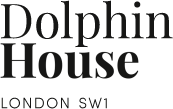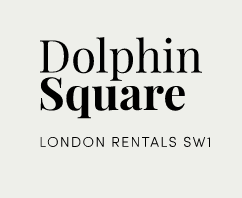The Congestion Zone can be confusing and expensive. It’s easy to drive through it, bleary-eyed one morning without even realising you’ve done so - until you’re hit with a fine.
We've written elsewhere about whether Dolphin Square is in the Congestion Zone and ULEZ, and this article demystifies what and where the London Congestion Zone is.
You'll find out how to pay it and - most importantly - how to avoid it, especially when you’re figuring out where to stay in London and how to travel around the city.
Where and What is the London Congestion Zone?
Where is the london congestion zone?
The Congestion Zone is an area in London, spanning roughly from Kings Cross to Vauxhall and Paddington to Whitechapel. This area was mapped out and selected in 2003 (when the policy came into action) as an area prone to the highest levels of traffic in London. Driving in this area now comes with at least one fee (the Congestion Charge or “CC”).
You can use this interactive Congestion Zone map to see if places you want to go are in the CC Zone.
You also need to be aware of the Ultra Low Emissions Zone (ULEZ) - an initiative to try and decrease air pollution in the capital that covers a much larger area. The Congestion Zone in its entirety sits within the ULEZ.
ULEZ applies all day every day (except Christmas day) and if your car doesn’t meet the outlined criteria then you may have to pay this in addition to the Congestion Charge.
What?
The Congestion Charge is £12.50 a day for cars, smaller vans, motorbikes and other lighter vehicles - it’s considerably more for HGVs and coaches.
The Charge is payable by every vehicle that drives through the congestion zone which emits a greater rate than 76g/km CO2 (this includes most cars, vans and motorised bikes.)
Why?
The Congestion Charge aims to reduce traffic levels in central London, make journeys on foot or bike safer and less polluted and to support the bus network being more reliable. Money gathered from the charge is poured back into London public transport, making it smoother and safer to get around. And it seems to be working.
When?
The Congestion Charge applies from 0700-1800 Monday to Friday and 1200-1800 on weekends and bank holidays. Between Christmas day and New Year's Day (25-31 December you wont need to pay).
The charge is enforced using Automated Number Plate Recognition (ANPR) technology, monitoring every vehicle which enters or exits the zone in real-time.
Coronavirus measures
Transport for London made temporary changes to the charges to discourage people from driving in London during the coronavirus pandemic. Here's the original announcement of these changes.
There were also new policies around reimbursement including:
- An expanded NHS patient reimbursement scheme for people vulnerable to coronavirus.
- A new reimbursement arrangement for local authorities and charities operating in the zone where they are providing certain support or services in response to the pandemic (including domiciliary care workers providing services on behalf of a local authority and volunteers supporting shielding residents).
Please note: these temporary changes have now been reversed.
Paying the Charge
There are a range of ways to pay - including automatically with Auto Pay, in advance, on the day or for 3 days following your journey. You can also pay for a custom date range using TFL’s “Pay to Drive London” tool.
Is Dolphin Square located in the Congestion Zone?
We've written in depth about this in another blog post, but the short answer is no: Pimlico - where Dolphin Square’s wonderful serviced apartments are located - is right on the cusp of the Congestion Zone. Dolphin Square itself is just a few streets away from the boundary, on the outside! So you can reach your apartment by road without having to pay the fee.
One of the brilliant guest amenities available at Dolphin Square is onsite parking - so residents can leave their vehicle there and head into the Congestion Zone by other means of transport, saving money.
Our serviced apartments are less than a 5-minute walk from Pimlico Tube Station, providing incredible convenience and access to excellent transport links and the rest of the city.
There are all sorts of alternative ways to travel into and through the Congestion Zone and ways to plan your route, including the TFL website and with the CityMapper app.
Which postcodes are in the Congestion Zone?
The following postcodes are within the London Congestion Zone: EC1, EC2, EC3, EC4, SE1, SW1, W1, WC1 and WC2.
So if your destination is located in any of these, then you won’t be able to drive in privately without paying the Congestion Charge (unless you do it between Christmas and New Year or late in the evening) so you’ll either need to cough up or choose another way to get there. See below for more details about other options.
If you aren’t sure about a postcode you can use this site to see if it’s in the Congestion Zone. Check out this informative blog from more information on travelling in, paying and appealing the Congestion Charge.
Driving across London without having to pay
So you want to get to the other side of London... On Google Maps you can get directions which specifically avoid any tolls.
How?
Open a location in Maps e.g. the Emirates Stadium in Highbury, then click the blue circle with the arrow in it for directions.
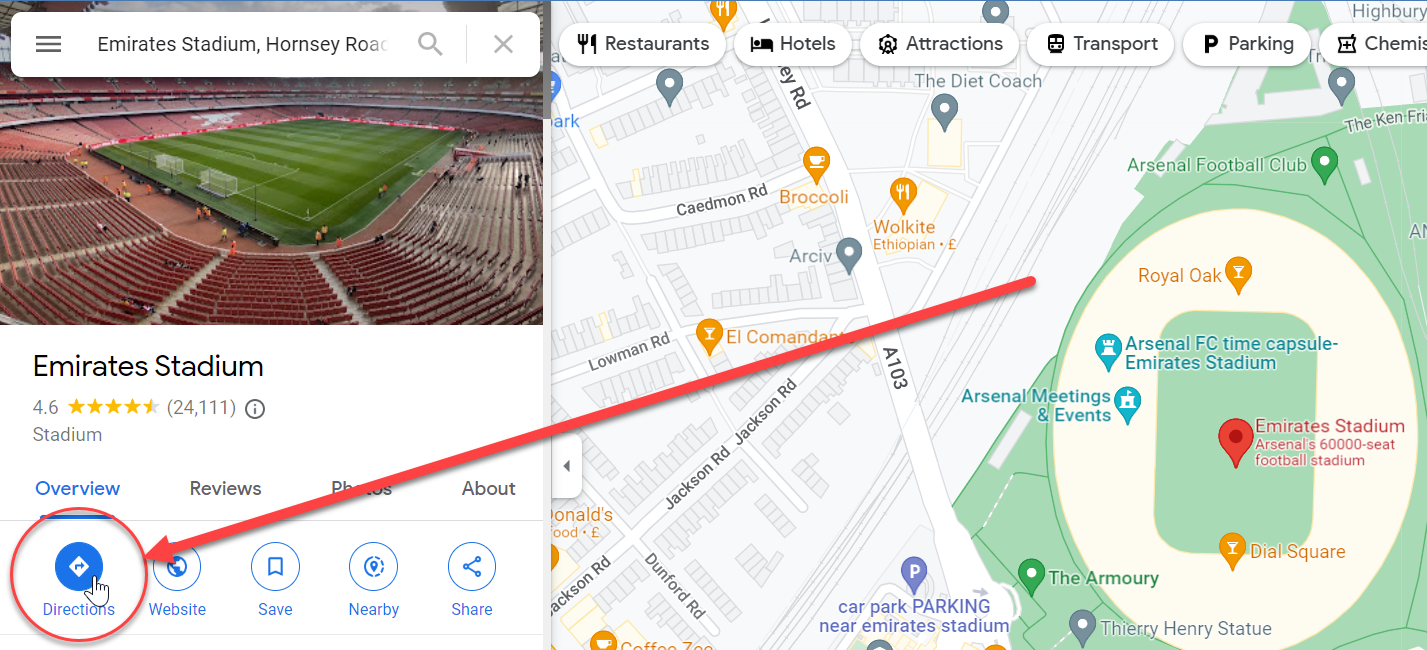
Enter your starting point, e.g. Dolphin Square Serviced Apartments.
By default you’ll be presented with the quickest route (marked 1 in the image below). You can select which mode of transport you’ll be using with the icons above your destination (2 below), choosing between driving, cycling, public transport, walking (or even flying).
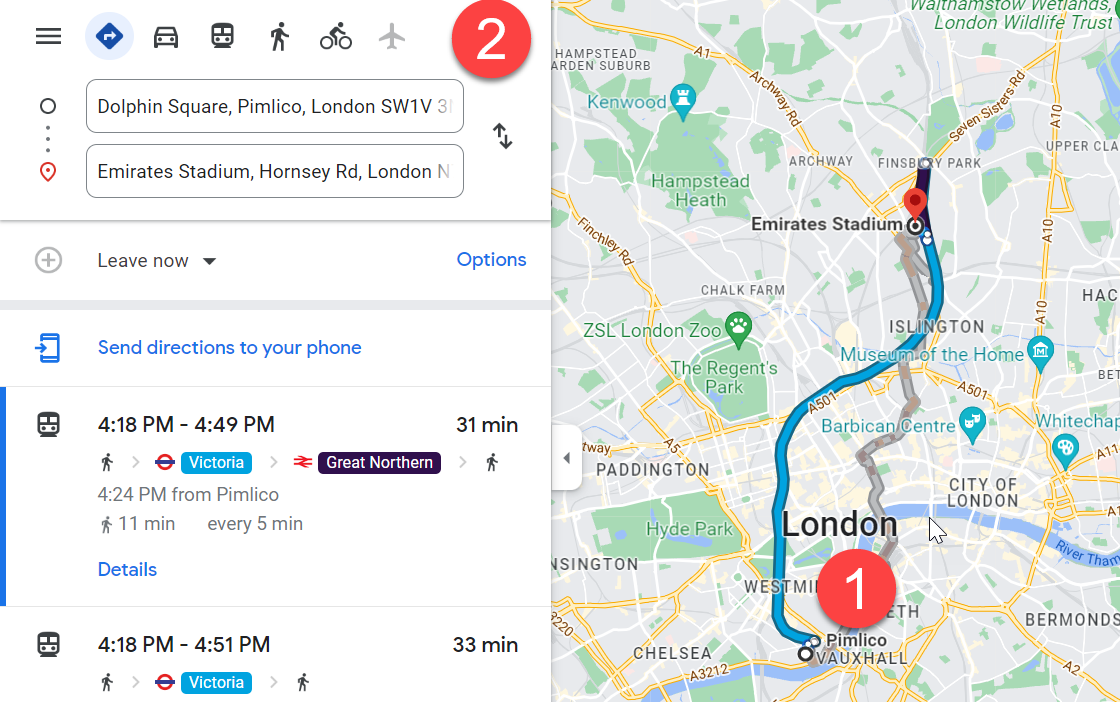
Using the above example, from Dolphin Square to Highbury, the quickest route by car between these points takes 29 minutes and directs you to drive straight through the city centre, but as you may have noticed this comes up with an amber warning “This route has tolls”. That’s the Congestion Charge.
You can bypass this though! Below the ‘Destinations’ section on Google Maps, you should find an ‘Options’ hyperlink. Click on that and one of the options which comes up is ‘Avoid’. Tick the box next to ‘Tolls’ and your route should refresh, giving you a route which circumnavigates the Congestion Zone. In this example, the route becomes 8 minutes and almost 2 miles longer, but you won’t get dinged with a £12.50 fee.
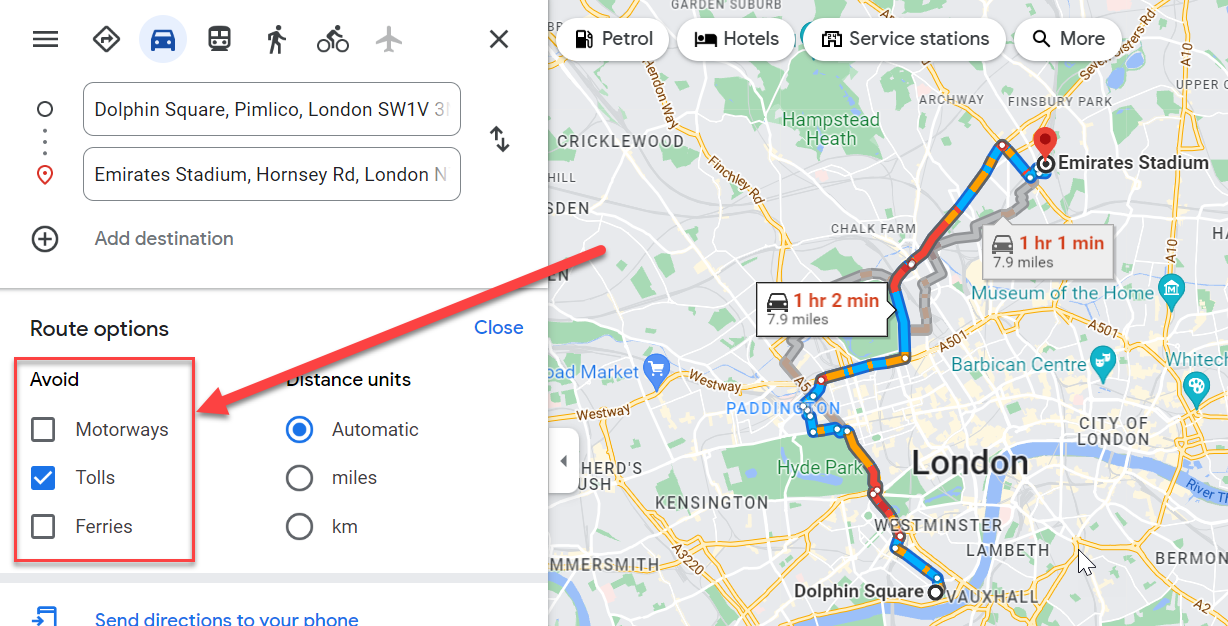
No Congestion Charge - alternatives
One of the best things about London is the brilliant public transport service. With 8,600 buses, 270 Tube stations and 12 major train stations connecting the city with the rest of the country - as well as Santander Cycles, great cycle lanes, black cabs, UBER and even water buses and taxis - there’s no shortage of alternative ways to get around!
Google Maps has a feature where you can select “Recommended Travel Mode” and tweak it to your needs (e.g. wheelchair accessible, fewest changes etc.)
Bringing down the cost of private travel
Sometimes driving is the most convenient way - it’s not always practical to bring a huge portfolio and all your props for a presentation with you on a Boris Bike. You could get a taxi - where the fee is either exempt or covered in the fare.
Carpool - you could (in line with COVID restrictions) share a ride with colleagues or friends, splitting the Congestion Charge between you.
This might not always be convenient - but if you’re flexible on timings then you could choose to travel outside of Congestion Charge hours - which run from 0700-1800 or 0700-1200 at weekends.
Using alternative modes of transport
The whole point of the Congestion Charge is to reduce traffic and pollution in the city centre, so you can do your part by taking advantage of all the brilliant alternatives available.
The Tube network is the original Underground Rail service in the world. It’s steeped in history and offers great, convenient service all over the capital.
Overground rail and the DLR (Docklands Light Railway) also make getting about a breeze. There are also thousands of buses and routes all over London - so you can always find a bus to hop on to, wherever you’re going.
Transport for London (TFL) has a new app which helps people plan routes around the city and maintain social distancing as well as take things like the Congestion Charge into account.
You could also if you’re able to and have the time - enjoy the sights and walk!
Breath Easy
So, now you know about the Congestion Charge and how to pay it, avoid it or get around it. Making the most of London’s public transport services and enjoying travelling in different ways couldn’t be simpler, as well as saving money on the Charge.
Those staying in Dolphin Square serviced apartments are in the best position to get close to central London in the luxury of their vehicle, but without having to fork out to drive through the centre, with convenient access to great public transport. So why not treat yourself and book a viewing today.


